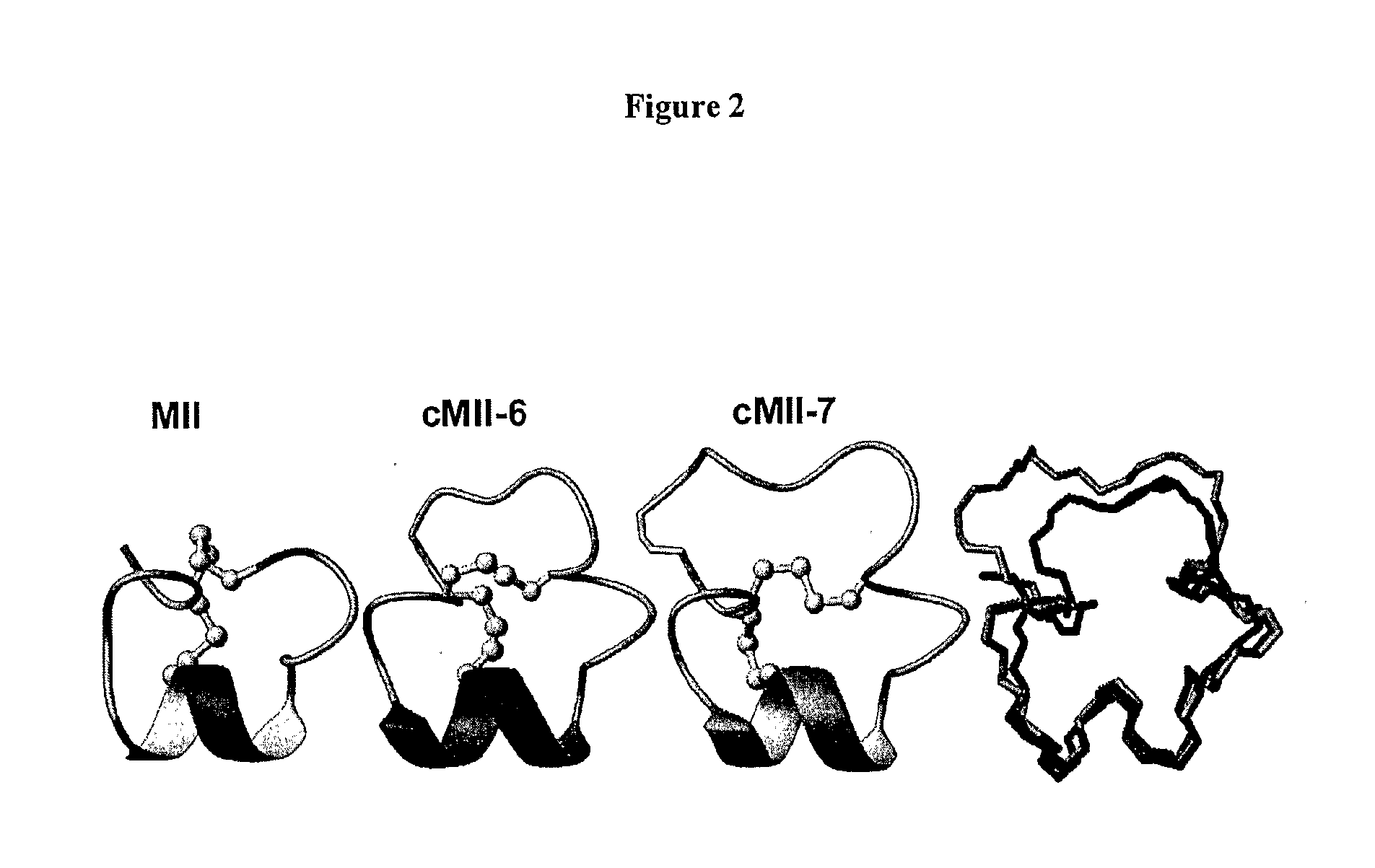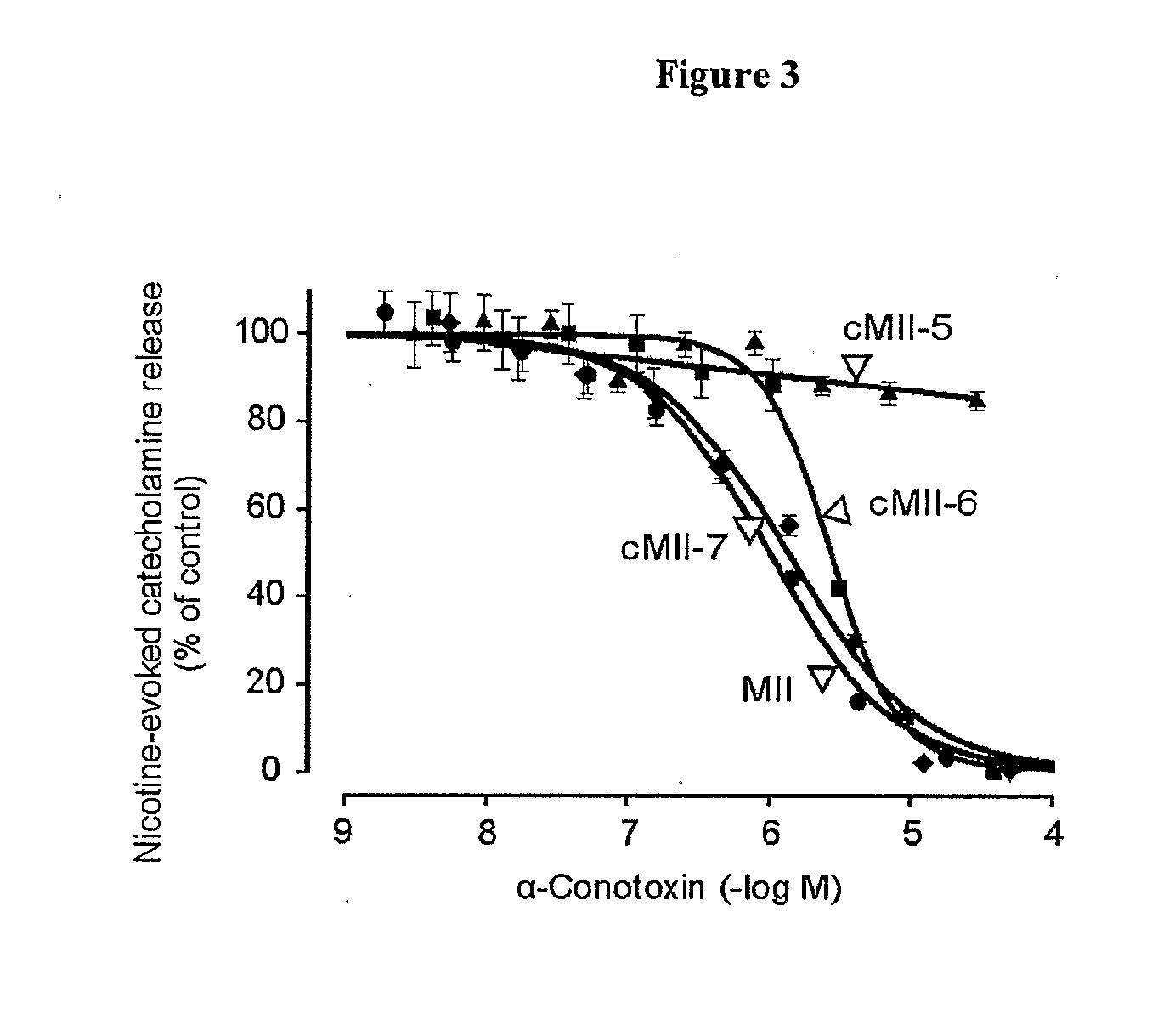Cyclised alpha-conotoxin peptides
a conotoxin and peptide technology, applied in the field of cyclised conotoxin peptides, can solve the problems of poor bioavailability, unwanted side effects, susceptibility to cleavage, etc., and achieve the effects of improving biophysical or biopharmaceutical properties, facilitating cleavage, and facilitating cleavag
- Summary
- Abstract
- Description
- Claims
- Application Information
AI Technical Summary
Benefits of technology
Problems solved by technology
Method used
Image
Examples
example 1
Cyclised MII Analogues
(a) Design and Synthesis
[0124]The size of the linker required to span the N and C termini of the native MII peptide was determined using well-known molecular modelling methodology. The three-dimensional model of MII was downloaded from the Protein Data Bank (PDB). The molecular modelling program, Accelrys (Insight II Modeling Environment, Release 2000, San Diego, Accelrys Inc. 2001), was used to determine an appropriate linker length. Briefly, this involved building in an amino acid linker between the N- and C-termini, then locking the conformation of the parent conotoxin structure and performing a simple energy minimisation. The conformation of the parent conotoxin was then unlocked and the entire peptide structure reminimized. Models with a linker size that is too small result in structures with higher energies than those with a linker length that does not perturb the native structure. It was determined that a linker containing a minimum of five residues was ...
example 2
Synthesis and Characterisation of Cyclised Vc1.1
(a) Design of Cyclised Vc1.1
[0141]The α-conotoxin Vc1.1 is a member of the 4 / 7 class of α-conotoxins which includes MII, and has potential for the treatment of pain (Sandall D W, Satkunanathan N, Keays D A, Polidano M A, Liping X, Pham V, Down J G, Khalil Z, Liven B G, Gayler K R, Biochemistry 2003 42(22):6904-11). There was no structural data available for Vc1.1 in the literature and hence the procedure described above for the design of the cyclised MII analogues could not be followed. However, because other conotoxins with this same framework have been studied structurally, the optimal linker length for Vc1.1 was estimated by simple distance measurements on other members of the same family, including MII and PnIA. There are four structures of α4 / 7 conotoxins in the Protein Data Bank excluding duplicate structures and the conotoxin GID which has an extended flexible “tail” on the N-terminus. By averaging the distance between the N- an...
PUM
| Property | Measurement | Unit |
|---|---|---|
| concentration | aaaaa | aaaaa |
| isotropic mixing time | aaaaa | aaaaa |
| temperature | aaaaa | aaaaa |
Abstract
Description
Claims
Application Information
 Login to View More
Login to View More - R&D
- Intellectual Property
- Life Sciences
- Materials
- Tech Scout
- Unparalleled Data Quality
- Higher Quality Content
- 60% Fewer Hallucinations
Browse by: Latest US Patents, China's latest patents, Technical Efficacy Thesaurus, Application Domain, Technology Topic, Popular Technical Reports.
© 2025 PatSnap. All rights reserved.Legal|Privacy policy|Modern Slavery Act Transparency Statement|Sitemap|About US| Contact US: help@patsnap.com



